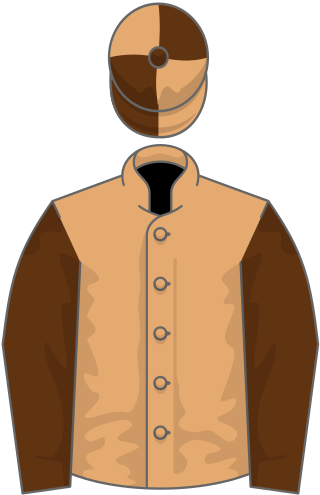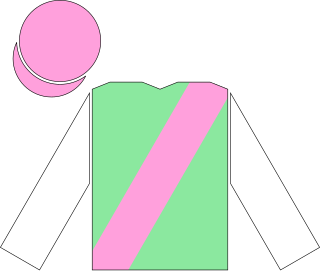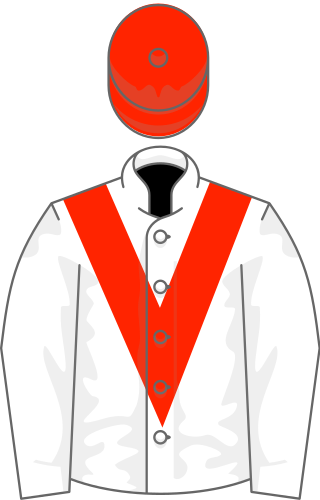
Mill Reef was an American-bred, British-trained Thoroughbred racehorse and sire. In a three-year career from 1970 to 1972, he won twelve of fourteen races and finished second in the other two. The horse was an outstanding two-year-old in 1970 but proved even better at three, winning the Epsom Derby, the Eclipse Stakes, the King George VI and Queen Elizabeth Stakes and the Prix de l'Arc de Triomphe. He won both his starts as a four-year-old before his racing career was ended by injury. Mill Reef is considered one of the greatest horses to run in Europe since WWII.

Sea-Bird (1962–1973) was a French Thoroughbred racehorse and sire. In a career which lasted from 1964 until October 1965, he ran eight times and won seven races. Sea-Bird is most famous for his victories in two of Europe's most prestigious races, the Derby and the Prix de l'Arc de Triomphe. His Timeform rating of 145 remains the second highest flat figure behind Frankel's rating of 147 awarded by that publication.

Roberto was an American-bred, Irish-trained Thoroughbred racehorse. In a career that lasted from 1971 until July 1973, he ran fourteen times and won seven races. He was the best Irish two-year-old of 1971, when his victories included the National Stakes. As a three-year-old, he won the Derby before recording a famous victory over Brigadier Gerard in the inaugural running of the Benson and Hedges Gold Cup. This is regarded by many experts to have been one of the greatest ever performances on a European racecourse. He won the Coronation Cup as a four-year-old before being retired to stud. Roberto had fragile knees and required a left-handed track to perform to his best; he never won going right-handed. He was described by Lester Piggott as " a champion when things were in his favour". Roberto also proved to be a highly successful and influential stallion.
Ballymoss (1954–1979) was an Irish Thoroughbred racehorse. In a racing career that lasted from 1956 until November 1958, he ran seventeen times and won eight races. In 1957, he became the first horse trained in Ireland to win the St Leger Stakes. The following season, he was Europe's leading middle-distance horse, winning the King George VI & Queen Elizabeth Stakes and the Prix de l'Arc de Triomphe.

Parth was a British-trained Thoroughbred racehorse best known for winning the 1923 Prix de l'Arc de Triomphe.
Darshaan was a British-bred, French-trained Thoroughbred racehorse and a Champion sire and broodmare sire.

Blakeney was a British Thoroughbred racehorse and sire. He won the Derby at Epsom as a three-year-old in 1969 and was one of the few winners of the race to campaign successfully at four. He later had a successful stud career.
Ribero was an American-bred British-trained Thoroughbred racehorse and sire. In a career which lasted from September 1967 until May 1969 he ran twelve times and won three races. He is best known for his performances in 1968 when he won two of the most important European races for three-year-olds; the Irish Derby, and the St Leger.

The 1986 Prix de l'Arc de Triomphe was a horse race held at Longchamp on Sunday 5 October 1986. It was the 65th running of the Prix de l'Arc de Triomphe.

Altesse Royale was a British Thoroughbred racehorse. In a brief racing career, lasting from October 1970 until September 1971 she ran five times and won four races. In 1971 she won the 1000 Guineas at Newmarket, the Oaks at Epsom and the Irish Oaks at the Curragh. Altesse Royale was injured and retired from racing later that year. She made no impact as a broodmare.

Lupe (1967–1989) was a British Thoroughbred racehorse. In a racing career lasting from September 1969 until July 1971, the filly ran seven times and won six races. As a three-year-old she won the Oaks at Epsom and the Yorkshire Oaks at York before sustaining her only defeat in the Prix Vermeille. Lupe returned as a four-year-old and defeated colts to win the Coronation Cup and the Princess of Wales's Stakes. She was then retired from racing and became a successful broodmare.
Musidora was an Irish-bred British-trained Thoroughbred racehorse and broodmare, best known for winning two Classics in 1949. The filly won four times from twelve races in a racing career which lasted from 1948 until September 1949. After winning once as a two-year-old she won her first three races as a three-year-old including the 1000 Guineas over one mile at Newmarket and at The Oaks over one and a half miles at Epsom Downs Racecourse a month later. In the latter race she narrowly defeated the French filly Coronation, who went on to win the Prix de l'Arc de Triomphe. She finished unplaced in her three subsequent races and was retired to stud, where she had limited success as a broodmare.
Charles Henri Semblat, (1897–1972) was a French jockey and racehorse trainer. Semblat was leading French jockey for more than twenty years before his riding career was ended by injury. He subsequently had an even more successful career as trainer for the owner-breeder Marcel Boussac. In 1950 he became Champion Trainer in Britain without ever visiting the country. Semblat is the only person to have both ridden and trained the winner of France's most important race, the Prix de l'Arc de Triomphe.
Coronation was a French racehorse. In a racing career which lasted from the spring of 1948 until October 1950, she ran thirteen times and won six races. As a two-year-old she was one of the best fillies of her generation in Europe, winning the Queen Mary Stakes in England and the Prix Robert Papin in France. In the following year she dead-heated for the Poule d'Essai des Pouliches, but was beaten in both the Oaks Stakes and the Irish Oaks. In October 1949 she established her reputation as one of the best fillies to race in Europe in the 20th century when she emphatically defeated a strong international field in the Prix de l'Arc de Triomphe. Her subsequent racing career was disappointing and she was a complete failure as a broodmare.
Niksar (1962–1980) was a French-bred, British-trained Thoroughbred racehorse and sire, best known for winning the classic 2000 Guineas in 1965. After failing to win as a two-year-old he won his first race of 1965 by six lengths before winning the Guineas at Newmarket Racecourse. He failed to win in his remaining five starts and was retired at the end of the season with a record of two wins and two places from ten starts. He had moderate success as a breeding stallion in Australia and Japan.
Mon Fils (1970–1979) was a British Thoroughbred racehorse and sire, best known for winning the classic 2000 Guineas in 1973. As a two-year-old, Mon Fils won two of his seven races including the Mill Reef Stakes. In 1973 he won the 2000 Guineas on soft ground, but ran poorly when strongly fancied for The Derby. His racing career was ended by injury in the autumn of 1973 and he was retired to stud, where he made no impact as a sire of winners. He was the first classic winner to be trained by Richard Hannon Sr.
Buoy was a British Thoroughbred racehorse and sire. Unraced as a two-year-old, he proved himself one of the best middle-distance colts of his generation in 1973 when he won the Predominate Stakes and the Great Voltigeur Stakes and finished placed in both the Irish Derby and the St Leger. He was even better as a four-year-old, winning the Yorkshire Cup before beating the outstanding French filly Dahlia in the Coronation Cup and taking the Princess of Wales's Stakes. His career was ended by injury in August 1974 and he was exported to stand as a breeding stallion where he had limited success as a sire of winners.
Roger Poincelet was a French jockey who rode a total of over 3,000 winners in a long career on both the flat and, initially, jumps. He is regarded as one of the finest French jockeys ever.
Attica Meli was an Irish-bred British-trained Thoroughbred racehorse and broodmare. Owned by Louis Freedman and trained by Noel Murless she won seven of her fifteen races and was regarded as the best British filly of her generation at both three and four years of age. She took time to show her best form but in the second half of 1972 she won five consecutive races including the Yorkshire Oaks, Park Hill Stakes and Princess Royal Stakes. In the following year she finished second in the Coronation Cup and the Hardwicke Stakes before stepping up in distance to record decisive wins over male opponents in the Geoffrey Freer Stakes and the Doncaster Cup. She was retired from racing at the end of 1973 and had some influence as a broodmare.
John Daley was a three-time British Classic winning jockey, who most notably won The Derby/Oaks double in 1867.






















